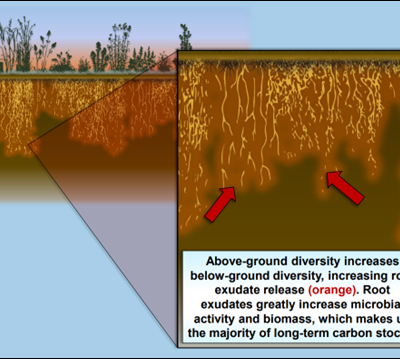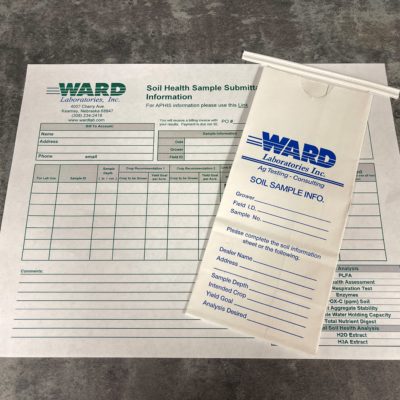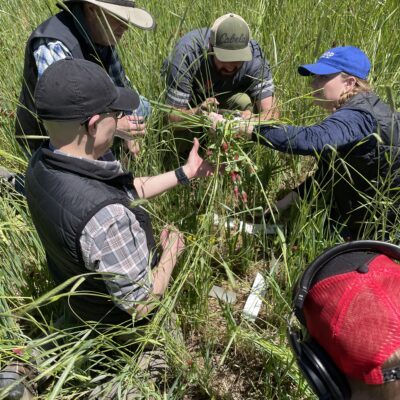Guest Author: Terry Buettner, Support Agronomist
The ‘Bomb Cyclone’ that hit the Midwest on March 13th has created a huge problem for many Midwest producers. Heavy rains on frozen fields created runoff of an impressive magnitude resulting in flood damaged fields. The damaging effects of flood water on agriculture are extensive. Crop residue was washed from one field and deposited on top of another. Some fields are still covered in standing water. As, mentioned in our previous post, ‘A Heartbreaking Spring for Livestock Producers‘, some livestock washed away as producers struggled to move them to higher ground in time.
Fields affected by flooding have many issues that need to be addressed before this year’s planting. Here are 5 considerations for crop producers this spring:
1.Debris
Miscellaneous debris, such as tires, tree limbs, buildings etc. will need to be removed manually. Dispose of these items properly by taking them to a landfill or piling and burying onsite depending on zoning ordinances. If you are burying buildings, an asbestos inspection may be required beforehand. Call Nebraska Health and Human Services at (402) 471-4210 for more information.
Many fields have rings of crop residue left around the edges of where large puddles were formed or piles of residue carried there by the flow of the water across fields. Residue less than 4 inches deep, it should be incorporated with a couple of passes with a disc or possibly a vertical tillage tool. If the residue is more than 4 inches deep, the recommendation is to spread the it thinner in order to make it easier to incorporate into the soil. If the residue is so thick it cannot be spread thinner and incorporated, on option could be to use a double wheel rake to turn it to speed drying, then bale it to remove it from the field. The bales could be laid in deep gullies from the flood to help stop further erosion.
Using GPS to track areas where heavy residue was incorporated into the soil may be helpful. Those areas will need additional nitrogen due to the decomposition and the high-carbon demand residue. This would enable you to create a map zone to increase the nitrogen rate if you do variable rate fertilization.
2. Sediment Deposits
After flooding fields may have heavy silt or sand deposits. If deposits are shallower than 2 inches, a disc or field cultivator should work to mix the sediment with topsoil. Deposits between 2 – 8 inches, a chisel plow or moldboard plow may be necessary to bury the silt or sand. If it is greater than 8 inches spread the sediment to a depth of less than 8 inches. Sadly, some fields with several feet of sand deposits will have to be abandoned. Ward Laboratories, INC. suggests delaying any field entry until the soil is dry enough to resist compaction, which would create a further problem that may take years to correct.
3. Erosion
Hillside erosion and gullies in flood damaged fields may be repaired with tillage passes, a blade scraper, box scraper or an excavator. There are some areas across the state, that have gullies several feet wide by several feet deep. Those fields will likely be abandoned temporarily or permanently as the producer cannot quickly correct the problem. When trying to correct erosion with machinery, please be safe. When using tractors or excavators on badly eroded areas practice caution and proceed slowly to prevent overturning.
I have heard gravity irrigated fields have had soil carried from the top to the bottom, that it is doubtful that water could flow through the field for irrigation. In this case, have the field checked by a land leveling business to determine if the field needs to be re-leveled.
On ground that has been stripped of soil armoring residue or covered in fine sediment, future wind erosion needs to be a concern. If the field can be prepared in time, planting a crop in 2019 would be a solution. As we move later into the season, the producer may claim Prevented Planting with Federal Crop Insurance, then planting a summer or fall cover crop would be an excellent solution to prevent wind erosion. In addition, the growing plants would jump start the soil microbiology that was lost during the flooding event.
4. Diminished Soil Health
Flooded soil syndrome is where the beneficial fungi and other microbial communities are lost due to topsoil movement and/or lack of oxygen for long periods of time. Using growing plants will replenish soil microbial communities and restore the soil to a condition suitable to future growth of a commodity crop.
After the Missouri River flooding in 2011, flood damaged fields which received cover crops in 2011 had a significantly higher corn yield (approximately +30 bushels) over non-cover cropped fields. Utilization of cover crops to rebuild soil structure, accumulate more topsoil, improve water holding capacity and promote sustainable fertility in flooded fields will be key to recovery.
5. Previously Applied Fertilizer and Lime
Dr. Ward has been receiving calls about dry fertilizer or lime that was applied before the flood. If fertilizer or lime was applied before the ground froze, then the product should still be in the soil and no additional application would be necessary. If it was applied after the ground froze or on top of snow, the flooding will have caused some loss. Dr. Ward recommends estimating a 50% loss of nutrient or lime after flooding when evaluating the need for re-application of amendments.
In conclusion, the biggest hurdle farmers with flood damaged fields face in 2019 is time. Planting in Nebraska usually begins around Mid-April. That leaves little time for flood repair and field preparations for planting. Prevented Planting is something we have rarely had to face. Cover cropping idled land would be the most beneficial solution to prevent further erosion and rebuild soil life. In addition, the cover crop bio-mass would be able to be grazed or hayed. If participating in a Prevented Planting Crop Insurance program, cover crops can not be hayed or grazed until after November 1st to receive payment.
More Resources:
Repairing Your Flood Damaged Fields – Michigan State University
Repairing Flood Damaged Fields – University of Nebraska-Lincoln




